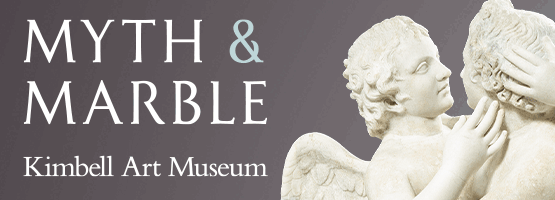More than a century ago, the western art world found a new subject of intrigue. As Europeans began heavier colonization of Africa, they began returning home with a variety of exotic art unlike anything the public had seen before. In turn, European modernists, including Pablo Picasso and Henri Matisse, incorporated visual elements inspired primarily by African masks and sculptures, applying the bold, sharply etched lines and warmer color palettes to their own works. And while this would lead to some radical new art movements and a new curiosity in art from the African continent, it was still art through western eyes and criteria. What defines “aesthetic” varies widely among cultures; beauty and ugliness are subjective and based on their cultural context. It would take a long time for westerners to understand and appreciate many of these African works more deeply, by focusing on their functionality and what they meant to the people who created them.
Organized by the Art Institute of Chicago, the Kimbell is the debuting institution, presenting nearly 250 objects collected from museums and private collections from around the world. Twenty African cultures from approximately ten countries are represented, primarily from the western and central parts of the subcontinent.
The exhibition’s first section is dedicated solely to the Chokwe people, a population long admired for its relative naturalism and refinement. A wood carving rendering a male figure, identified as the culture hero Chipinda Ilunga, represents male power and virility, but also moral integrity. The Chokwe have a word that describes all of those traits cibema—and it’s an example of the recurring trend of one term having multiple meanings to convey beauty.
But not all masks serve to represent masculinity. A section of the exhibition examines four different cultures and their standards of beauty, which includes clarity, youthfulness, moderation and balance. Included here is a helmet mask from the Mende culture called a sowei, which has been carved out of dark wood to resemble a woman with supple neck rolls. The wood is polished to symbolize fresh, plump, youthful skin, depicting a young and healthy woman in the prime of her life who is ready to bear children.
“Another thing that’s inherent in a lot of African art—and again, kind of a symbol of beauty—is the practice of scarification or tattooing,” Price says, adding that it’s often done in conjunction with ritual ceremonies to mark milestones in a person’s life, such as reaching puberty. That subject is presented in the section titled Gracing the Body and the Head, which contains one of the exhibition’s oldest pieces: a terracotta head from the ancient city of Ife, dating sometime between the 12th and 15th centuries, the face of which bears striations indicative of the traditional scarification patterns. The section also looks at the importance of elaborate hairstyles, which are still seen today, echoed in sculptures, ornate combs, and hairpins.

1 ⁄6
Yòrùbá culture; Ifè, Nigeria Head (possibly a King) 12th–15th century Terracotta with traces of pigment and mica Kimbell Art Museum, Fort Worth, purchase by the Kimbell Art Foundation, 1994, AP 1994.04

2 ⁄6
Chokwe culture; Angola
Male Figure (Identified as Chibinda Ilunga)
19th century
Wood, pigment, and fiber
Kimbell Art Museum, Fort Worth, purchase by the Kimbell Art Foundation, 1978, AP 1978.95

3⁄ 6
Fang: Mvai culture; Gabon
Male Reliquary Guardian Figure (Eyema Byeri)
19th–early 20th century
Wood, beads, and pigment
Dallas Museum of Art, The Eugene and Margaret McDermott Art Fund, Inc., 2000.3.MCD
Image courtesy of the Dallas Museum of Art

4 ⁄6
Baule culture; Côte d’Ivoire
Female Face Mask (Ndoma)
Late 19th–early 20th century
Wood, pigment, and copper alloy
The Art Institute of Chicago, Ada Turnbull Hertle Endowment, 1988.309

5 ⁄6
Olówè of Ìsè (c. 1869–1938)
Veranda Post (Òpó Ògògá)
Yòrùbá: Èkìtì culture; Ìkéré, Nigeria
1910–14
Wood and pigment
The Art Institute of Chicago, Major Acquisitions Centennial Fund, 1984.550

6 ⁄6
Chokwe culture; Angola
Female Face Mask (Mwana Pwo or Pwo)
19th–early 20th century
Wood, pigment, metal, and fiber
Private collection
Courtesy of Schweizer Premodern, New York
In the show’s eighth and final section, ten wooden statuettes covered in nails command sheer awe the moment they’re encountered. Derived from the Kongo and Sonye cultures, these power figures (also known as nail fetish figures, though contemporary scholars have been using that term less) are primarily rendered as humans, with the exception of one two-headed dog. Upon first sight, these nkisi nkondi may be unsettling, which, says Price, is the point. The nails were usually hammered into the objects as an attempt to heal a sick person or attack enemies. “To the cultures that made it, it’s not ugly,” she explains. “In fact, the ugliness is serving a really, really important purpose—to drive out these spirits and to imbue that sculpture with this sense of both fascination and being terrified… so the awesomeness is combining those two elements, that something can be fascinating and terrifying at the same time.”
Price recalls an idea that resonated with her in a recent conversation with Constantine Petridis: “Going back to that idea that it entails use and functionality that goes beyond appreciation, beyond aesthetic evaluation, that their idea of beauty is very pragmatic… It’s art for life’s sake.”
—AMY BISHOP




